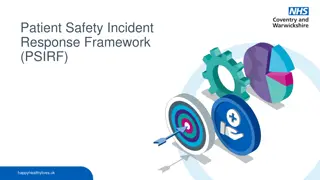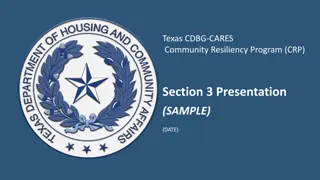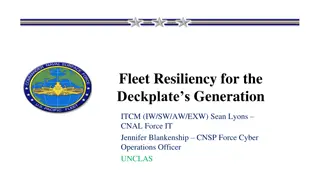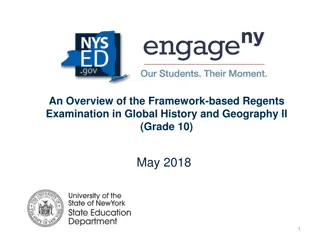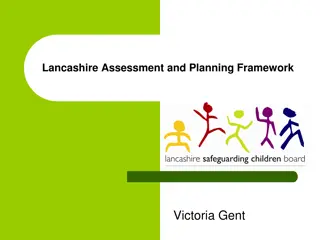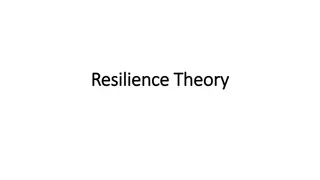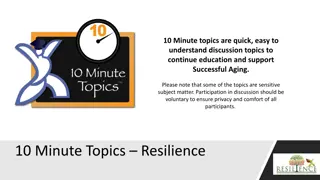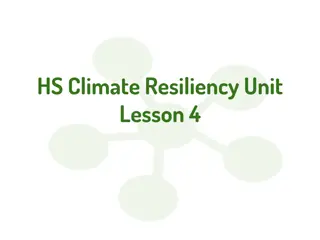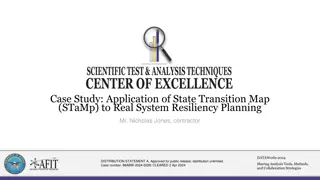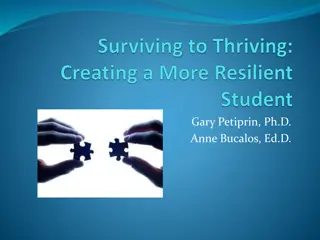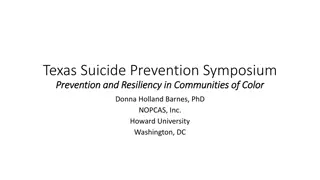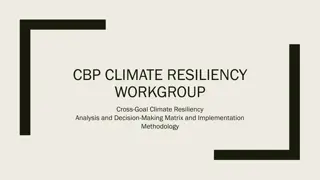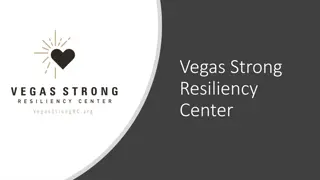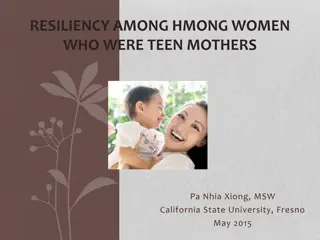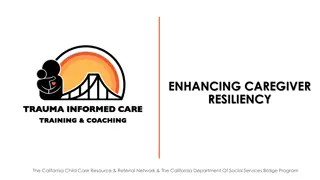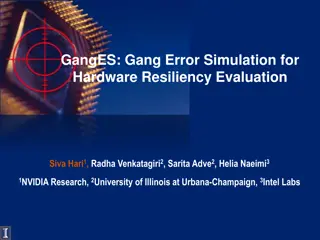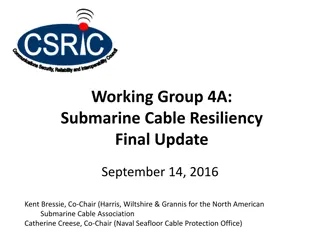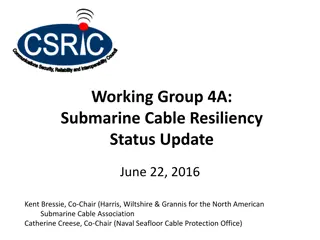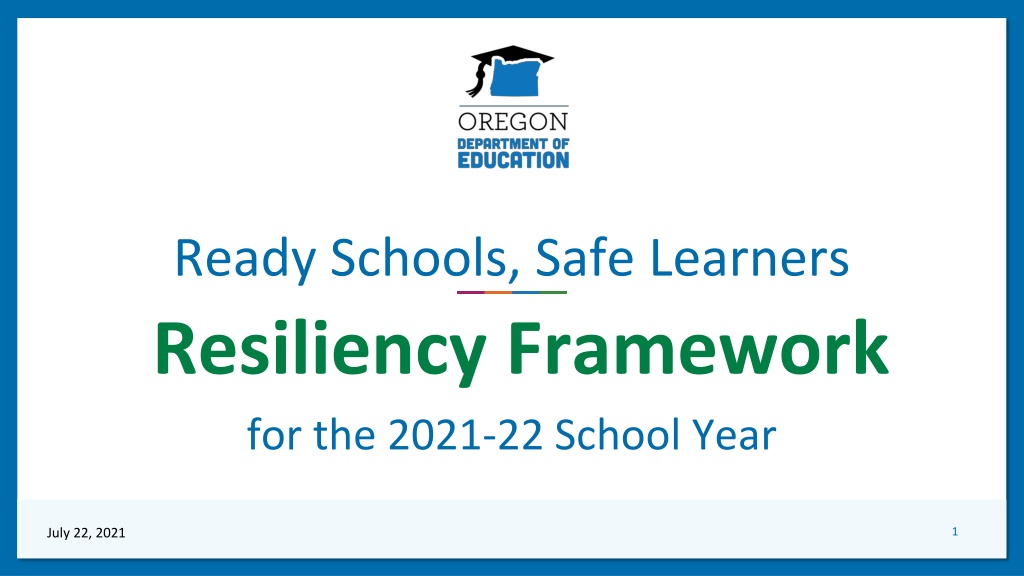
Resiliency Framework for the 2021-22 School Year
The Resiliency Framework for the 2021-22 School Year outlines guidelines jointly developed by the Oregon Department of Education and the Oregon Health Authority to ensure safe, in-person learning for K-12 students. Emphasizing care, connection, and equity, the framework prioritizes relationships and offers flexibility to local communities in addressing health and safety concerns amid evolving COVID-19 conditions. Schools are encouraged to submit Safe Return to In-Person Instruction and Continuity of Services Plans to meet federal requirements and access funding for creating a conducive learning environment. Mental health support initiatives are also highlighted.
Download Presentation

Please find below an Image/Link to download the presentation.
The content on the website is provided AS IS for your information and personal use only. It may not be sold, licensed, or shared on other websites without obtaining consent from the author. Download presentation by click this link. If you encounter any issues during the download, it is possible that the publisher has removed the file from their server.
E N D
Presentation Transcript
Ready Schools, Safe Learners Resiliency Framework for the 2021-22 School Year 1 July 22, 2021
Replaces Ready Schools, Safe Learners version 7.5.2 and applies to the 2021-22 school year. The framework was jointly developed by the Oregon Department of Education (ODE) and the Oregon Health Authority (OHA) and is informed by U.S. Department of Education and CDC guidance. Resiliency Framework for the 2021-22 School Year Contains advisory guidance, except where compliance is mandated by existing state and federal law. Requirements are listed with the rule reference for ease of identification. Prioritizes care, connection and relationship. Oregon s K-12 staff and students can reconnect with one another after a year of separation through quality learning experiences and deep interpersonal relationships among families, students and staff. Centers equity. Recognizing the disproportionate impact of COVID-19 on Black, American Indian/Alaska Native, Latino/a/x, and Pacific Islander communities; students experiencing disabilities and students living in rural areas. 2
All schools will operate full-time, in-person instruction every day. School districts are not required to offer a remote learning option, except during isolation or quarantine. Resiliency Framework for the 2021-22 School Year Returns school health and safety practice decision making to local control to best meet the needs local communities. As schools plan for the fall 2021 in-person school year, it is important to remember: our communities will be living with the virus until there is widespread immunity. COVID-19 continues to change with new variants, our knowledge of mitigation efforts grows over time. For these reasons the guidance for responding to COVID-19 also changes. Right now, the best tools to protect individuals are vaccination for those eligible, face coverings, physical distancing, ventilation and airflow, handwashing, and staying home if ill or exposed to someone with COVID-19. Opportunity for transmission decreases with each mitigation practice that is implemented. 3
All school districts and public charter schools must submit a Safe Return to In-Person Instruction and Continuity of Services Plan to ODE by end of day August 23, 2021. Replaces the RSSL Operational Blueprint and meets requirements in OAR 581-022-0105. This plan meets the requirements of American Rescue Plan Elementary and Secondary School Emergency Relief (ESSER III) State plan. Aligns with guidance on school operations from the CDC. Receipt of ARP ESSER funding is dependent on creating and keeping updated a Safe Return to In-Person Instruction and Continuity of Services Plan. School districts & charter schools should take immediate action to: Review the directions for meeting these requirements. Complete the Smartsheet form and upload attachments, including a link to a webpage where your plan is publicly available. Self-certify and submit signature in the Smartsheet form. Safe Return to In-Person Instruction & Continuity of Services Plan 4
Mental Health Supports Oregon Department of Education 5
ODEs Integrated Model of Mental Health Mental health, which encompasses emotional, social, cognitive and behavioral functioning, is one of the cornerstones of public education, and central to building school cultures and climates where every student, and all who serve them, thrive. Children and teens do better in school when student and school staff mental health and well-being needs are being met. ODE s Model centers health and well-being and consists of four interconnected pillars of practice: 1) trauma informed care, 2) social emotional learning, 3) racial equity, and 4) strengths-based, culturally relevant prevention and intervention programs within a system of care. Oregon Department of Education 6
ODEs Integrated Model of Mental Health Focus on health rather than fixing what is broken. Recognizing the inherent strengths, agency, voice, courage and determination of individuals, families, and communities, and asking what strategies they use to thrive in the face of difficult challenges, and how we can celebrate that resilience. We strongly discourage the use of school or district wide mental health screenings, particularly where there may be insufficient services and supports to meet mental health service demands. We recommend assessing each student on an as-needed basis when questions or concerns regarding their well-being have been identified. Oregon Department of Education 7
Prioritize Student & Staff Health & Well-Being Devote several days of time and space at the beginning of the school year, and ample opportunities throughout the year for students and staff to connect and build relationships in and out of the classroom. Provide ample class time at the beginning of the school year, as well as ongoing time, space, and creative opportunities and outlets (art, music, movement/dance, creative writing, clubs and interest groups etc.) for students and staff to make sense of their experiences, and to process personal and professional stresses, emotions, trauma, and grief. Prioritize linking students and families with culturally responsive mental health services and supports. Foster peer/student led initiatives on social-emotional well-being and mental health. Oregon Department of Education 8
Access to Mental Health & Crisis Services Strengthen communication throughout communities and school networks via newsletters, district website, social media, etc. Ensure school community members have full information regarding available local services including contact information. Develop strong relationships, partnerships and contracts (as applicable) with local/county systems of care, coordinated care organizations (CCOs), SBHCs, community-based mental health providers, community health workers and others to ensure access to a comprehensive array of culturally-responsive services for students and families. Oregon Department of Education 9
Support School Safety & Prevention Offerings include suicide prevention services, behavioral safety assessments, access to the SafeOregon Tip Line, and positive school culture and climate support that includes programs to prevent bullying, cyberbullying, harassment, and intimidation, and to promote mental health and well-being in school districts statewide. All of these services and supports align with ODE s Integrated Model of Mental Health in that they are equity and racial equity-centered, trauma and SEL- informed, and strengths-centered. Oregon Department of Education 10
COVID-19 Health & Safety Oregon Department of Education 11
COVID-19 Health & Safety The Resiliency Framework focuses on advisory health and safety recommendations that provide for flexibility to: Return to full-time, in-person instruction for all students, Honor and recognize the uniqueness of communities across Oregon, and Support schools in health and safety planning to meet community-specific needs and strengths. As districts plan and implement recommendations included in the Resiliency Framework, they will necessarily need to consider a continuum of risk levels when all recommendations cannot be fully implemented. Oregon Department of Education 12
Monitoring Local Data District decisions should consider: Level of community transmission of COVID-19. COVID-19 vaccination coverage in the community and among students, teachers, and staff. Use of a frequent COVID-19 screening testing program for students, teachers, and staff who are not fully vaccinated. Testing provides an important layer of prevention, particularly in areas with substantial to high community transmission levels. COVID-19 outbreaks or increasing trends in the school or surrounding community. Ages of children served by K-12 schools and the associated social and behavioral factors that may affect risk of transmission and the feasibility of different prevention strategies. Oregon Department of Education 13
Requirements in State & Federal Law State Requirement Federal Requirement Each school district and public charter school must submit an Operational Plan/Safe Return to In- Person Instruction AND Continuity of Services Plan by August 23, 2021. Maintain a Communicable Disease Management Plan. Maintain a process to exclude and isolate staff or students who may have been exposed to COVID-19. Use of face coverings on public transit, including school buses (CDC). Oregon Department of Education 14
COVID-19 Testing in Schools Diagnostic testing Test students or staff who develop symptoms at school or are exposed to COVID-19 at school. This testing program was rolled out in January 2021 and more than 90% of K-12 schools have registered. For some students, this COVID-19 testing in K-12 schools may represent their only access to a COVID-19 test and the importance of this access cannot be overstated. This testing may be used to shorten the length of quarantine for exposed individuals who test negative if this is recommended by the local public health authority. Screening testing Test students or staff who do not have symptoms of, or exposure to, COVID-19. Seeks to reach unvaccinated students and staff, but enrollment is open to anyone and vaccination status is not verified. OHA offers separate screening testing programs for students and staff. 15 Oregon Department of Education 15
Public Health Communication OHA and ODE strongly advise that school districts, charter schools, and private schools develop plans for communicating health and safety protocols to students, families and communities. A strong communication plan that includes protocols for communicating potential COVID-19 cases to the school community and other stakeholders is critical. Provide clarity and supporting materials for communication to community members (in their preferred language) about the specific health and safety protocols in place at the school, and why these might differ from those of nearby schools or be different across school districts. School and district leaders are encouraged to use the communications toolkit to initiate conversations and communication with staff, students, families, the media and the broader school community. Oregon Department of Education 16
Training for School Staff OHA and ODE strongly advise that school districts, charter schools, and private schools develop plans for training all staff in their health and safety protocols and jointly develop lesson plans for instruction to students. Consider forming a school committee to oversee the implementation of the health and safety protocols that is inclusive of represented and unrepresented staff. Ensure that all staff have a safe place to bring implementation questions and suggestions forward. Oregon Department of Education 17
Advisory Health & Safety Protocols Oregon Department of Education 18
Face Coverings In grades kindergarten and up, OHA and ODE strongly advise face coverings for all unvaccinated staff and students when inside buildings. Per OHA guidance, it is acceptable for both fully vaccinated and unvaccinated people to be outdoors without a face covering. A face covering is NOT a substitute for physical distancing. Face coverings remain strongly recommended in addition to maintaining at least 3 feet of physical distancing to the extent possible, especially when indoors around people from different households. Oregon Department of Education 19
Physical Distancing OHA and ODE strongly advise that schools support and promote physical distancing as described below: Support physical distancing in all daily activities and instruction, maintaining at least 3 feet between students to the extent possible. Maintaining physical distancing should not prevent a return to full-time, in-person instruction for all students. When it is not possible to maintain a physical distance of at least 3 feet, it is especially important to layer multiple other prevention strategies, such as indoor masking. Consider physical distancing requirements when setting up learning and other spaces, arranging spaces and groups to allow and encourage at least 3 feet of physical distance. Minimize time standing in lines and take steps to ensure that required distance between students is maintained, including marking spacing on floor, one-way traffic flow in constrained spaces, etc. Oregon Department of Education 20
COVID-19 Vaccinations Under Oregon law, youth age 15 years and older may give consent to receive medical treatment, including vaccinations, when provided by a physician, physician assistant, naturopath, nurse practitioner, dentist or optometrist, or other professionals operating under the license of these providers. Parental or guardian consent is required to vaccinate people 12-14 years old, but the parental or guardian consent requirement does not necessarily mean a parent or guardian must go with the youth to receive the vaccination. Written consent may be obtained in advance. Oregon Department of Education 21
COVID-19 Vaccinations CDC guidance states that people who are fully vaccinated and do not have COVID- 19 symptoms do not need to quarantine or get tested after an exposure to someone with COVID-19 unless they develop symptoms. This protects the student s access to in-person learning, sports and extracurricular activities. People are considered fully vaccinated 2 weeks after their second dose of the Pfizer-BioNTech or Moderna COVID-19 vaccines, or 2 weeks after the single-dose Johnson & Johnson s COVID-19 vaccine. Oregon Department of Education 22
Cohorting OHA and ODE strongly advise that schools design cohorts for students to the extent possible. Cohorts help manage risks in the potential spread of COVID-19. In particular, the size of the cohort matters for risk management. Student cohorting: (1) limits the number of exposed people when a COVID-19 case is identified in the school, (2) quickly identifies exposed individuals when a COVID-19 case is identified, (3) minimizes the number of people who may need to be quarantined as well as school-wide disruptions in student learning. Oregon Department of Education 23
Quarantine An exposure is defined as a susceptible individual who has close contact (less than 6 feet) for longer than 15 cumulative minutes in a day with a person who has COVID-19. If a student or staff member is diagnosed with COVID-19, then the LPHA should be consulted to review the situation. If a school cannot confirm that 6 feet of distancing was consistently maintained during the school day, or 3 feet of distancing with consistent mask use was maintained during the school day, then each person the confirmed case was in contact with will need to quarantine this could include all members of a stable cohort. K-12 Quarantine Exception: Quarantine is not necessary for: Students who were within 3 or more feet of an person with COVID-19; Where both students were engaged in consistent and correct use of well-fitting face coverings; and Other K 12 school prevention strategies were in place in the K 12 school setting. This exception does not apply to teachers, staff, or other adults in the indoor classroom setting. See the COVID-19 Exclusion Summary Guide for exclusion and isolation protocols for sick students and staff identified at the time of arrival or during the school day. Oregon Department of Education 21
Ventilation & Airflow ODE and OHA strongly advise schools to ensure effective ventilation and improve the indoor air quality in schools by: 1. Increasing the amount of fresh outside air that is introduced into the system; 2. Exhausting air from indoors to the outdoors; and 3. Cleaning the air that is recirculated indoors with effective filtration methods (e.g., HEPA filters) to remove virus-containing particles from the air. Oregon Department of Education 25
Handwashing OHA and ODE strongly advise that schools create protocols and systems to ensure access to soap, water and alcohol-based hand sanitizer with at least 60% alcohol at the key times named below and that schools prioritize handwashing with soap and water after students or staff use the restroom. All people on campus should be advised and encouraged to frequently wash their hands or use hand sanitizer. Remind students with signage and regular verbal reminders from staff of the critical nature of hand hygiene. Oregon Department of Education 26
Instruction, Attendance & Enrollment Oregon Department of Education 27
Requirements in State Law & Rule Districts must meet all instructional time requirements in Division 22. Districts must meet the definition of instructional time, including under the direction or supervision of a licensed or registered teacher, licensed CTE instructor, licensed practitioner, or assigned Educational Assistant. Districts that use digital content as core curriculum must complete an independent adoption of materials. Districts must have a plan for administering state assessments to its students. Districts will use pre-pandemic attendance and reporting practices. For remote instructional models, schools and districts must take daily attendance. Oregon Department of Education 28
Resources Oregon Department of Education 29
Resources Mental Health & Well-Being ODE s Integrated Model of Mental Health The Mental Health Toolkit is designed for district leaders, school administrators, and school- based mental health professionals (i.e. school counselors, school psychologists, school social workers, and school nurses) interested in promoting the health and well-being of school communities while creating a culture of safety, care and belonging. Mental Health website is designed to assist districts, schools and ESDs in promoting the mental health and well-being of their school communities. Resources and information on OHA s School-Based Mental Health Services are an essential component of our education system. OHA s Crisis Line and Behavioral Mental Health Resources Oregon Department of Education 30
Resources Isolation & Quarantine Exclusion and isolation protocols for sick students and staff identified at the time of arrival or during the school day. See the COVID-19 Exclusion Summary Guide. Offer free, on-site COVID-19 testing to students and staff with COVID-19 symptoms or exposure via OHA s K- 12 school testing program. Adherence to school exclusion processes as laid out in Communicable Disease Guidance for Schools. Reviewing and using the Planning for COVID-19 Scenarios in Schools toolkit. Cleaning surfaces (e.g. door handles, sink handles, drinking fountains, transport vehicles) following CDC guidance. Schools and districts must cooperate with any LPHA investigations and requirements to protect the public health. LPHAs follow statewide Investigative Guidelines for COVID-19 and other diseases. School and district leaders are encouraged to use the communications toolkit to initiate conversations and communication with staff, students, families, the media and the broader school community. Oregon Department of Education 31
Public Education Campaign Learn more at oregon.gov/readyschools Oregon Department of Education 32
Thank You ODECOVID19@state.or.us Oregon Department of Education 33

